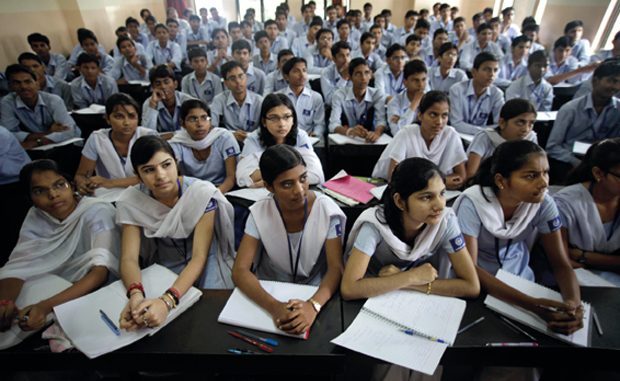
Prime minister Modi recently encouraged students to believe that “India will lead the 21st century” because the century’s driving force — knowledge — is with India. That may prove true at some point in the distant future, but right now, it is the lack of knowledge and skills that pose the most serious threat to India’s outlook.
To employ its emerging young population, the country needs to create nearly a million jobs a month. Instead, the economy has created only 15 million new jobs in the past seven years. Indeed, the lack of employment opportunities has fueled demand for reservations by castes at the top of the social ladder. Unless the government focuses like a laser on creating jobs, the frustration and anger of India’s jobless youth will upend the dream of the much-touted demographic dividend.
The problems start with the absence of basic nationwide data on employment. In Spain, which witnessed massive protests by the indignados — the indignant ones — 55 per cent of youth were unemployed. We simply do not have comparable statistics to understand India’s indignados among the Patels and Jats.
Although very limited in scope, the recently released quarterly report by the Labour Bureau still paints an alarming picture. Despite covering only eight labour-intensive sectors and some 2,000 business units, the report provides a snapshot and comparative data indicative of the national state. The survey began in 2009, at a time when jobs were growing at a steady pace (climbing to a high rate of 3.15 per cent in 2011), but the slowdown began as early as 2012. In the last quarter of 2015, the number of jobs actually fell by 0.43 per cent. Economists estimate that on a nationwide basis, only around 15 million jobs were created in 2005-12, leaving some 50 million new labour market entrants without jobs.
The Prime Minister’s reminder that this is the era of the knowledge economy or his invocation of India’s glorious past in the realm of thought is not enough to prepare today’s youth for 21st century work. The sector which could absorb India’s bulging young population is industry and the services sector. However, shortages — not only of science and technology graduates but also of basic skills like welding, electrical and plumbing work — have left enterprises without the necessary labour force.
Data from the Manpower Talent Shortage Survey shows that 64 per cent of Indian enterprises that employ more than 10 workers are unable to fill vacancies due to skills shortages. This is, of course, a global problem: 40 per cent of European employers face similar problems in hiring workers. Whatever growth is taking place is being driven by the digital revolution and innovative labour-saving technology.
The skill and jobs mismatch in the West has not only created jobless growth (based on a small number of technologists and specialists) but has also steadily increased the income gap. India’s current lead in the IT/BPO sector has enabled many Indians with IT skills to migrate to the US, Europe and Australia. However, the training of the next generation of IT leaders is hamstrung by poor primary and secondary education. The rise of the knowledge economy that Indian leaders celebrate is, in fact, exacerbating problems in a country that is unable to educate its youth fast enough to keep pace with global trends.
India’s employment problems could be intensified because of “premature deindustrialisation”, a phenomenon, defined by a UNreport as one in which opportunities in industry shrink sooner and at much lower levels of income than for early industrialisers. Failing education could dim dreams of Indian youth sailing forward on the favourable currents of the knowledge economy.
Source: BW Businessworld

Leave a Reply